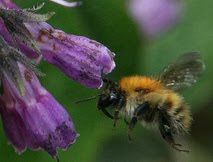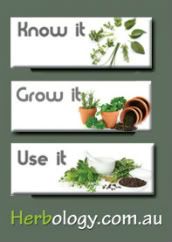Yesterday found me learning to do something I have always want to learn! Soap making! Our friend Jill, who is in our beekeeping group and our herb group, invited me over to her house to learn to make both goat’s milk soap and pine tar soap. Here is the recipe we used for the goat’s milk soap
28 ounces lard
24 ounces coconut oil
24 ounces olive oil
4 ounces castor oil
27 ounces of frozen goat’s milk, mostly defrosted and big hunks chopped up ( you could use any milk or water)
11. 5 ounces of lye
First thing Jill did was line her molds with parchment paper, for easy removal after the soap cured. She also lined some extra baking dishes with parchment paper for the extra. So you see, you could start soaping without any specialized bits and pieces if you wanted to!
The first step was to measure out and add the lard, coconut oil, olive oil and castor oil to a stainless steel pot. Do Not use an aluminum pot! There would be a terrible reaction when you added the lye later! No aluminum mixing spoons or pots allowed in soap making.
Jill used a handy dandy digital scale her husband has for his work to measure as she went. But not necessary folks, you could just measure as usual, but be mindful to be precise. After the lard and oils were measured and put in the pot, it went on the stove top to gently melt down
Next, a second stainless steel pot was got out and the goat milk measure into it. Then the lye was added SLOWLY to the milk and stirred with a stainless steel spoon. You have to stir until the lye is dissolved completely or you will end up with a piece of lye in your soap and that would burn you! Lye is very caustic and reacts with the fats and oils in your skin, is you get it on you. Rather like turning your skin into soap! Ugh!
(that is the bag of lye. care must be used to keep it very dry before use)
Do note, protective eye and hand gear used when starting to work with the lye part of the recipe! Here Jill is measuring the lye.
And slowly adding the lye to the milk, while stirring. It turned a beautiful yellow color and smelled like oysters at this point!
After the lye was thoroughly dissolved in the milk the pan is brought over to the pan of gently melted oil and lard and poured into it. ( Just get the oils melted and then turn off the heat)
Jill had an immersion blender she used for mixing it all together until it reached the trace stage. You could do it by hand, but a bit more work:) I had always heard of this trace, but wasn’t sure what it was. After you see it once, you will know though. Here is a good explanation
Trace is the so-called "point of no return" in soap making. It is the point where the oils or the fats in your soap have successfully mixed with your lye solution. More appropriately, this is the point where your oils and your lye turn into soap. The following are the tell-tale signs of trace:
- Your soap has a thick consistency similar to cake batter after you've mixed it.
- If after you drizzle some of the soap on the surface of the mixture, it leaves behind a "trail" that takes a while to sink back in the mixture.
So after we reached trace, it was time to fill the molds!
Jill’s darling homeschooled daughter kept us company:)
After the soap sat up a bit, it was moved to a warm spot where it will finish reacting for a week.
Jill made the first batch, while I documented and took notes, and then she had me make the second batch:) Easy breezy really. Just like following any other recipe!
I will share the Pine Tar soap recipe in a different post later. I gotta run go get my vehicle from the repair shop!
Big hugs to all who visit here at Comfrey Cottages:)
























10 comments:
Well, at least you have been staying clean even if you haven't been blogging! I don't think that makes a bit of sense, but maybe you will understand what I'm trying to say!;>}xxoo Nancy
Making soap is a lot of fun, isn't it? I've started using the soap I made not to long ago and it is wonderful. I am going to write down your recipe, since my last batch was made with a kit. I'm also going to purchase a digital scale as well as a digital thermometer to make it easier next time. Thank you for sharing your soap making experience with us.
Have a great weekend,
Anke
Thanks for the post Leslie! There is always something interesting going on in your neck of the woods! Maybe one day I might try to make some soap among the 101 other things I want to do. It is always easier though if there is someone else around who does it too.
Have a wonderful weekend!
Take Care,
Ulrike
It made perfect sense Nancy! We speak the same language! lol xx
That kit you got did look very nice Anke. It is a lot of fun. You are welcome, I enjoy sharing:) Why do you use the thermometer? xx
Ulrike, you are so right, it is much easier to learn something if someone is showing you. I hope the pictures and descriptions were thorough enough that if you decide to go for it, you would feel confident. Big hugs to you xx
I've read that the oil mixture and the lye mixture have to be exactly the same temperature. Did you not worry about that? Mmh, might have to do a bit more research on that...
Oh gosh Anke! I don't know a thing about that... we didn't use one,in fact the lye/milk mixture had to be significantly colder than the oil mixture, when we added the former to the latter. the milk had been frozen and still had little ice chunks in it when we added the lye to it. please let me know what you read further. ours seemed to work fine...maybe ours is the folk/traditional way and there is a more precise way to do it. soap has been made for centuries though, and can't imagine everyone who made it even owned a thermometer. Wow, I love it when these thoughts and ideas are all talked about Anke! thanks!
Leslie,
Usually one tries to get the soap within a 10 degree range of one another using a thermometer. I teach soap making classes in Wisconsin and like most soap makers I use a sink full of ice to try to get the two pots in the same range. Likely your soap turned out just fine. As long as it went through the saponification process, I would say give it a few weeks to cure and have a very bubbly 2011 :)
Thank you Deb:) That is good to learn! Next time I see Jill, I will mention it to her, email Anke so she knows she was right, and make sure and do that next time:) happy holidays to you and many blessings for the new year:)
I had to work this day :( ... Wish I had been able to be there, I love homemade soap & it looks fun to do. I bet the next "soap post" will be Leslie and I making it? lol
damn right it will be et!!
Post a Comment